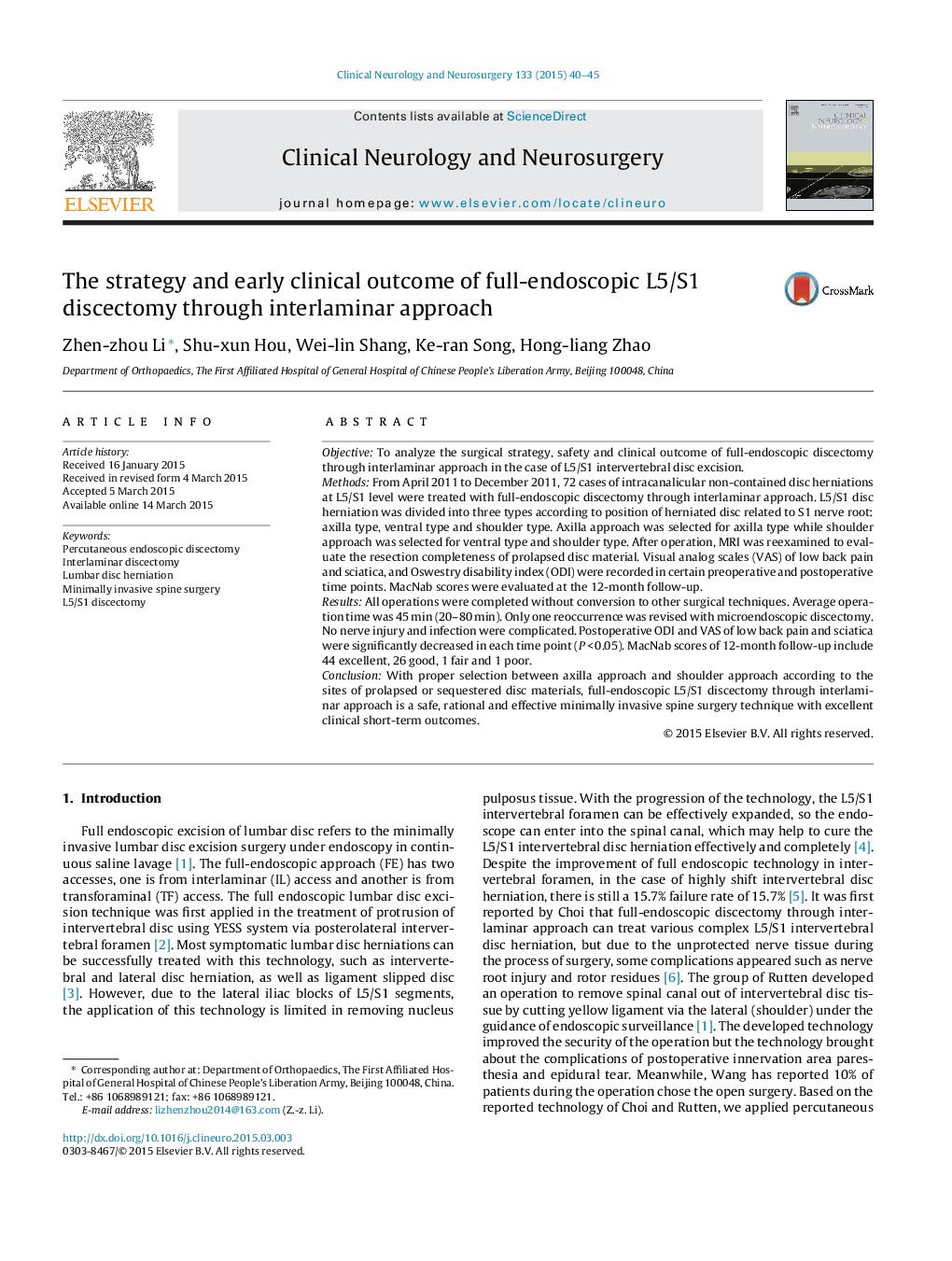| Article ID | Journal | Published Year | Pages | File Type |
|---|---|---|---|---|
| 3039878 | Clinical Neurology and Neurosurgery | 2015 | 6 Pages |
•Full-endoscopic discectomy was performed for L5/S1 intervertebral disc excision.•No nerve injury and infection were observed during perioperation.•Interlaminar approach was safe and of effective minimally invasive.
ObjectiveTo analyze the surgical strategy, safety and clinical outcome of full-endoscopic discectomy through interlaminar approach in the case of L5/S1 intervertebral disc excision.MethodsFrom April 2011 to December 2011, 72 cases of intracanalicular non-contained disc herniations at L5/S1 level were treated with full-endoscopic discectomy through interlaminar approach. L5/S1 disc herniation was divided into three types according to position of herniated disc related to S1 nerve root: axilla type, ventral type and shoulder type. Axilla approach was selected for axilla type while shoulder approach was selected for ventral type and shoulder type. After operation, MRI was reexamined to evaluate the resection completeness of prolapsed disc material. Visual analog scales (VAS) of low back pain and sciatica, and Oswestry disability index (ODI) were recorded in certain preoperative and postoperative time points. MacNab scores were evaluated at the 12-month follow-up.ResultsAll operations were completed without conversion to other surgical techniques. Average operation time was 45 min (20–80 min). Only one reoccurrence was revised with microendoscopic discectomy. No nerve injury and infection were complicated. Postoperative ODI and VAS of low back pain and sciatica were significantly decreased in each time point (P < 0.05). MacNab scores of 12-month follow-up include 44 excellent, 26 good, 1 fair and 1 poor.ConclusionWith proper selection between axilla approach and shoulder approach according to the sites of prolapsed or sequestered disc materials, full-endoscopic L5/S1 discectomy through interlaminar approach is a safe, rational and effective minimally invasive spine surgery technique with excellent clinical short-term outcomes.
